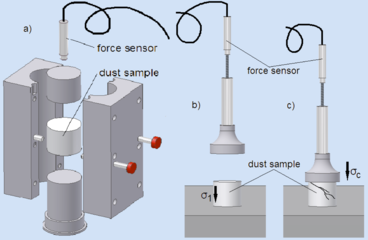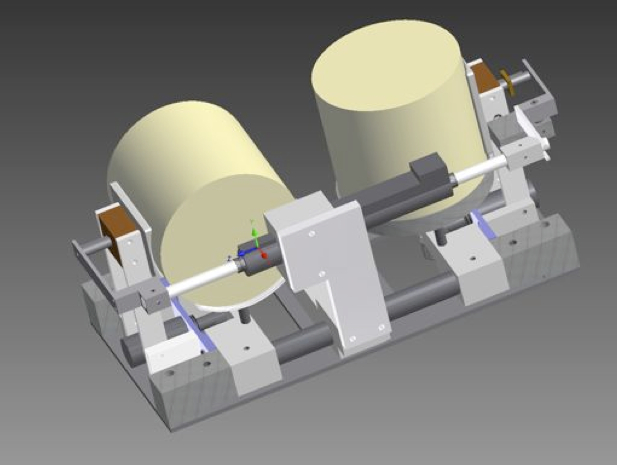collision of dc meter dust aggregates (CODE-1)

research area: astrophysics
experiment title:
Collision of dc meter dust aggregates
experiment acronym: CODE-1
funding agency: ESA
grant number: CORA program
performing organization:
Experimentelle Astrophysik, Fakultät für Physik, Universität Duisburg-Essen
prime investigator:
Dr. Jens Teiser
experiment objective
abstract
Planets form in protoplanetary disks consisting of solid particles (dust) embedded in a gaseous environment. It is widely accepted that the process of planet formation starts with the coagulation of dust grains to macroscopic agglomerates (Blum & Wurm 2008). Whether coagulation directly leads to the formation of planetesimals (km-sized planetary precursors) or other processes like gravitational attraction between solids together with concentrating processes (like e.g. streaming instability) lead to planetesimal formation is still a matter of discussion. However, decimeter sized bodies play a crucial role in both formation scenarios. In the coagulation model the decimeter size is crucial, as growing bodies have to conquer the critical size range of decimeter to meter quickly, as bodies of this size drift rapidly towards the central star (Weidenschilling 1977). In the second scenario decimeter bodies are of great importance, as they are easily trapped in vortices due to their gas coupling behavior in disk environments and therefore can be concentrated efficiently (Johansen et al. 2007, Youdin 2011).
The goal of the project CODE I was to determine the threshold conditions for fragmentation in collisions between decimeter size bodies. Especially the onset of fragmentation is of great interest, as this requires small collision velocities and can only be investigated in microgravity.
related publications
- Weidenschilling, S.J., 1977. Aerodynamics of solid bodies in the solar nebula. Mon. Not. RAS, Vol. 180, 57-70.
- Johansen, A., Oishi, J. S., Mac Low, M., Klahr, H., Henning, T., Youdin, A., 2007. Rapid planetesimal formation in turbulent circumstellar disks. Nature, Vol. 448, 7157, 1022- 1025.
- Blum, J., Wurm, G., 2008. The Growth Mechanisms of Macroscopic Bodies in Protoplanetary Disks. Ann. Rev. of Astronomy and Astrophysics, Vol. 46, 1, 21-56.
- Youdin, A. N., 2011. On the Formation of Planetesimals Via Secular Gravitational Instabilities with Turbulent Stirring. The Astrophysical Journal, Vol. 731, 2, art. Id. 99.
- Beitz, E., Güttler, C., Blum, J., Meisner, T., Teiser, J., Wurm, G., 2011. Low Velocity Collisions of Centimeter-sized Dust Aggregates. The Astrophysical Journal, Vol. 736, 1, art. Id. 34.
- Deckers, J. and Teiser, J., 2013. Colliding Decimeter Dust. The Astrophysical Journal, Vol. 769, 2, art. Id. 151.
Experimental Setup

experiment campaigns
experiment year: 2012
number of catapult flights: 15


 "
"